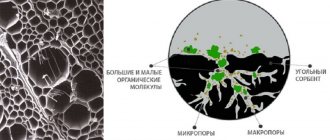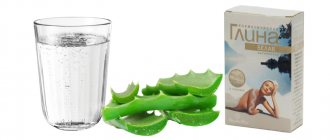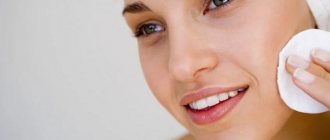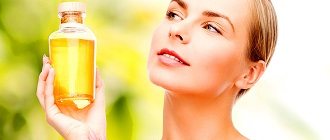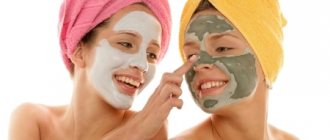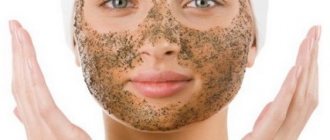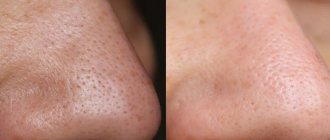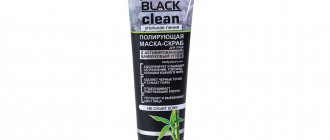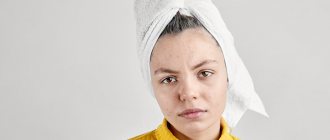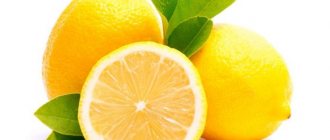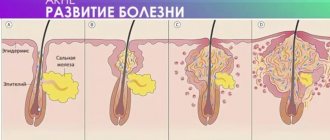Hi all!
This morning I met a neighbor girl. Smart and beautiful, but...
A girl becomes a girl, as eloquently evidenced by the pimples that appear on her face.
We all face this problem in our youth, and some of us periodically have to deal with unsightly pimples and the spots they leave behind.
In this fight, acne clay will be an effective remedy.
After using it, blackheads disappear without a trace, the skin becomes smooth and soft.
Let's figure out what kind of clay is best to use for this and how to do it correctly.
How and why clay gets rid of acne
The effectiveness of cosmetic procedures based on clay is explained by its rich composition, in addition, each substance penetrates inside the pores without problems.
Therefore, the use of clay for acne on the face is very common - I primarily recommend masks based on it for skin problems. It has the following actions:
- rids the skin of excess fat;
- deeply cleanses pores of any type of impurities, toxins, bacteria;
- enriches and nourishes the face;
- dries the dermis and reduces inflammation;
- tones, promotes elasticity and smoothes wrinkles;
- tightens pores, which prevents the appearance of blackheads;
- heals wounds and gets rid of pimple marks.
In general, this or that effect depends on the type of clay, since each of them has a different composition.
Pimples on the forehead: causes and treatment
Pimples on the forehead can appear for various reasons: from the use of comedogenic cosmetics, due to frequent rubbing with a hat, or taking certain medications48. Rashes can appear against the background of hormonal disorders, exacerbation of gastrointestinal pathologies48,49,80.
One of the drugs that can be used for mild to moderate acne is Azelik®5 gel. Its main active ingredient is azelaic acid5. The medicine must be applied to clean, dry skin twice a day5.
Which is the most effective
Any cosmetic clay is used to cleanse the skin, however, in order to get the best result, it is recommended to choose the one most suitable for your skin type.
There are several types:
- white;
- blue;
- green;
- black;
- yellow;
- red.
To better understand the difference, let's compare each of them:
| Type of clay | Characteristics and properties | Who is it suitable for? | Action |
| White | The most universal and widely used, its second name is kaolin. The composition contains many microelements, including zinc and magnesium. It is distinguished by its soft effect, makes the facial contour more expressive, refreshes the skin and eliminates age spots. | Women with thin, sensitive and dull skin and minor problems. | Kaolin will improve your complexion, brighten your skin, help fight minor rashes and dry out your skin a little. The product is gentle and universal; it will not cope with severe rashes, but will make the face more velvety. |
| Blue | Its uniqueness lies in the presence of almost all necessary minerals. The main actions are antiseptic, anti-inflammatory, cleansing. Blue clay also promotes cell restoration and renewal. | For those with inflamed skin that requires lightening, smoothing out facial wrinkles, cleansing and healing wounds after acne. | Since this type is considered a good antiseptic and has a disinfectant effect, the mineral will be a great help for problem skin. Over time, the skin will become more even and acne will gradually disappear. |
| Green | This clay contains a large amount of phosphorus, magnesium and other useful trace elements, as well as silver and iron, which give the substance its characteristic color. The healing properties are as follows: relieving inflammation, deep cleansing and regeneration of the skin. | In its pure form it is perfect for oily and combination skin. In other cases, it is recommended to dilute it with kaolin. | The cosmetic product will cleanse pores and get rid of oily shine. Green clay must be mixed with another type, then it will not dry out the skin. |
| Black | Black clay contains a lot of iron, strontium, magnesium and quartz. It perfectly cleanses of toxins and impurities, eliminates rashes, blackheads and pimple marks. | Girls with problematic dry skin, enlarged pores, spots on the face. After use, the skin will become clearer and matte. | It is believed that the darker the clay, the greater the effect you can expect in the fight against acne and blackheads. This type will perfectly cleanse the face and also absorb toxins and any impurities. The skin will become cleaner and the pores will shrink. |
| Yellow | This type of clay contains a considerable amount of potassium and iron and can enrich it with oxygen. It prevents the appearance of rashes, eliminates toxins and has a rejuvenating effect. It is used in the form of a mask and peeling, as it removes the stratum corneum well. | For those with aging and dull skin with flaking and acne. It will be especially effective during periods of stress, climate change or severe fatigue. | Using regularly, it will even out your complexion, make it look fresher and prevent the formation of blackheads and pimples. |
| Red | The red type of clay is used for especially delicate sensitive skin. The effect of use is similar to kaolin, but the effect will still be weaker. That's why it suits any skin. | For girls with delicate dry skin with frequent rashes, even allergic types. | When using it, you gradually get rid of redness and rashes, even if they are allergic in nature. In addition, it will remove peeling and improve blood supply to cells. |
As you can see, although clay comes in different types, each of them is suitable for problem skin. Blue, black, yellow and green clay work best for blackheads. White and blue are considered universal. If you have delicate and sensitive skin, you should use red or pink.
What effect does it have on the skin?
- Thanks to many microelements, it tones and nourishes;
- Being a natural antiseptic, it cleanses the epidermis;
- Whitens, and therefore is one of the most effective remedies against acne;
- Able to eliminate minor skin irritations and dry out acne;
- Eliminates excessive enlargement of pores, tightening them;
- Smoothes the skin, causing fine wrinkles to disappear from the face forever;
- Normalizes metabolic processes.
The effect of clay is enhanced significantly if it is used in combination with various aromatic oils and herbal decoctions.
Depending on the color, it is divided into blue and white. The color is influenced by the content of certain chemical elements. Thus, the first type of clay (blue) has this color due to chromium and copper salts. To improve your skin condition, you just need to choose the clay that's right for you.
Contraindications
Despite the fact that clay is a natural material and there are no medical contraindications, it should still be used with caution. First of all, we are talking about individual intolerance to any component in its composition or accompanying ingredient.
Before using the mask, be sure to do an allergy test - apply the mixture to the crook of your arm and wait 15 minutes. If there is no allergic rash or burning sensation, use the product without fear. Otherwise, the use of clay is contraindicated.
Even if there is no allergy, you cannot keep the mask on for long. In some cases, the face begins to pinch and burn, which is possible due to the close proximity of the vessels, resulting in a rush of blood to the skin. Then you need to immediately wash off the substance.
Also, you should not apply the mask to the area around the eyes, where the skin is especially thin and delicate.
How to use clay
I recommend using clay masks according to the instructions:
- First, cleanse your face with toner, foam or micellar. You should not use regular soap as it dries out the skin.
- Mix the clay with warm water or other ingredients if required by the mask recipe. For those with very dry skin, I recommend adding oil to prevent the skin from drying out. You can mix clay with oatmeal or ground coffee. Remember - you cannot use hot water, otherwise there is a risk of losing the important properties of the clay. It is also important not to stir the mixture in a metal container; contact with metal is extremely undesirable.
- Stir the mixture thoroughly and apply a thick layer, avoiding the area around the eyes.
- Leave the product on for no more than 20 minutes, then rinse well with water. If there is a burning sensation, wash it off earlier. It is important not to allow it to dry completely, otherwise the clay will be more difficult to remove and may even slightly injure the skin.
- After the procedure, it is a good idea to use a nourishing or moisturizing cream.
For oily and combination skin, the mask can be applied two to three times a week, for dry skin - no more than once and left for no longer than 5-7 minutes.
Facial care after mechanical cleansing
The method effectively solves the problem of acne and comedones, but is also the most traumatic. The cosmetologist manually cleans problem areas, after steaming and thoroughly cleansing the skin. The procedure is completed with a soothing mask.
The main disadvantages of the procedure are the risk of inflammation and scarring. Therefore, facial skin care after mechanical cleansing should be especially thorough. Recovery takes up to 5-7 days. During this period, you should regularly degrease the skin with antiseptic preparations that do not contain alcohol. Soothing compresses will help reduce swelling.
Selection of recipes according to skin type
There are a huge number of clay masks that you can easily prepare yourself at home, and you will probably have all the ingredients at hand.
For fatty
If you have acne and excess fat, feel free to use any clay without fear of drying out the skin. There are several options for the product:
- Prepare one small spoon of kaolin and blue clay, then add aloe or cucumber juice.
- Black clay will help fight blackheads and inflammation . Two tbsp. l. stir with water and two drops of tea tree oil.
- One tablespoon of any clay that suits you best and green tea mixed with lemon juice will help get rid of inflammation and achieve a more even complexion.
- You can remove excess fat by using a large spoon of blue clay in tandem with the same amount of cranberry juice.
For dry
Many recipes are not suitable for a dry face; it is important to take care of proper hydration. You must select one of the following methods:
- One large spoon of mineral water and the same amount of green clay are mixed with a small spoon of homemade cream and honey.
- Prepare 1 tablespoon of warm water and blue clay, add a teaspoon of oil, for example, olive, flaxseed or avocado. After this, the skin will be clean and well moisturized.
- Take kaolin and fruit juice in equal proportions; peach juice is good.
- The clay is mixed with warm milk and egg yolk. This mask will not dry out your face and will help combat problem areas.
For combined
Women with combination skin not only need to get rid of shine, but also not overdry dry areas. In this case, any of the following recipes would be an excellent option:
- Mix 1 spoon of white clay, starch, a little warm water and prepare the mixture. The ingredients help eliminate irritation, dry out, and soften the skin.
- Take a large spoon of blue clay and combine it with vegetable or fruit juice, such as tomato.
- If you need to get rid of keratinized areas, mix 1 large spoonful of green clay, warm water and oatmeal.
- In the case of combination skin, black clay also helps. A quarter of the yeast should be mixed with slightly warmed milk and a spoonful of clay should be added.
Reviews
My clients share their reviews with me:
Lyudmila, 34 years old: “I have oily skin and a few blackheads, I’ve been using a white or blue clay mask for six months now. The face has become much cleaner, there are significantly fewer acne, and the skin is no longer shiny as before. I make a mask two to three times a month. The price of clay is low, so the procedure is affordable.”
Masha, 21 years old: “I had problem skin since adolescence. Now acne periodically appears on my face, black clay saves me. I make a mask once a week, now there are almost no rashes, and my face is cleaner, even acne marks have almost completely disappeared.”
Olya, 28 years old: “I also use clay, I try to do the procedure at least once a month. The face is not shiny, there are fewer acne, and the skin is pleasant and velvety, much better.”
Kaolin: what's inside
Nature has endowed kaolin with a whole “bouquet” of microelements that are beneficial for skin health. For example, it contains zinc, a well-known antioxidant that fights the harmful oxidizing effects of free radicals. It has a drying, brightening effect on the skin, mattifies and evens out the complexion. What else is white clay rich in?
- Silicon. Stimulates the production of collagen, which is responsible for maintaining the elasticity of the epidermis.
- Manganese. Degreases the skin and gives a noble matte finish.
- Aluminum. It has a lifting effect, making facial contours clearer and the upper layer of the dermis smoother.
- Calcium. Nourishes the skin at the cellular level, takes an active part in metabolic processes, making the skin silky.
